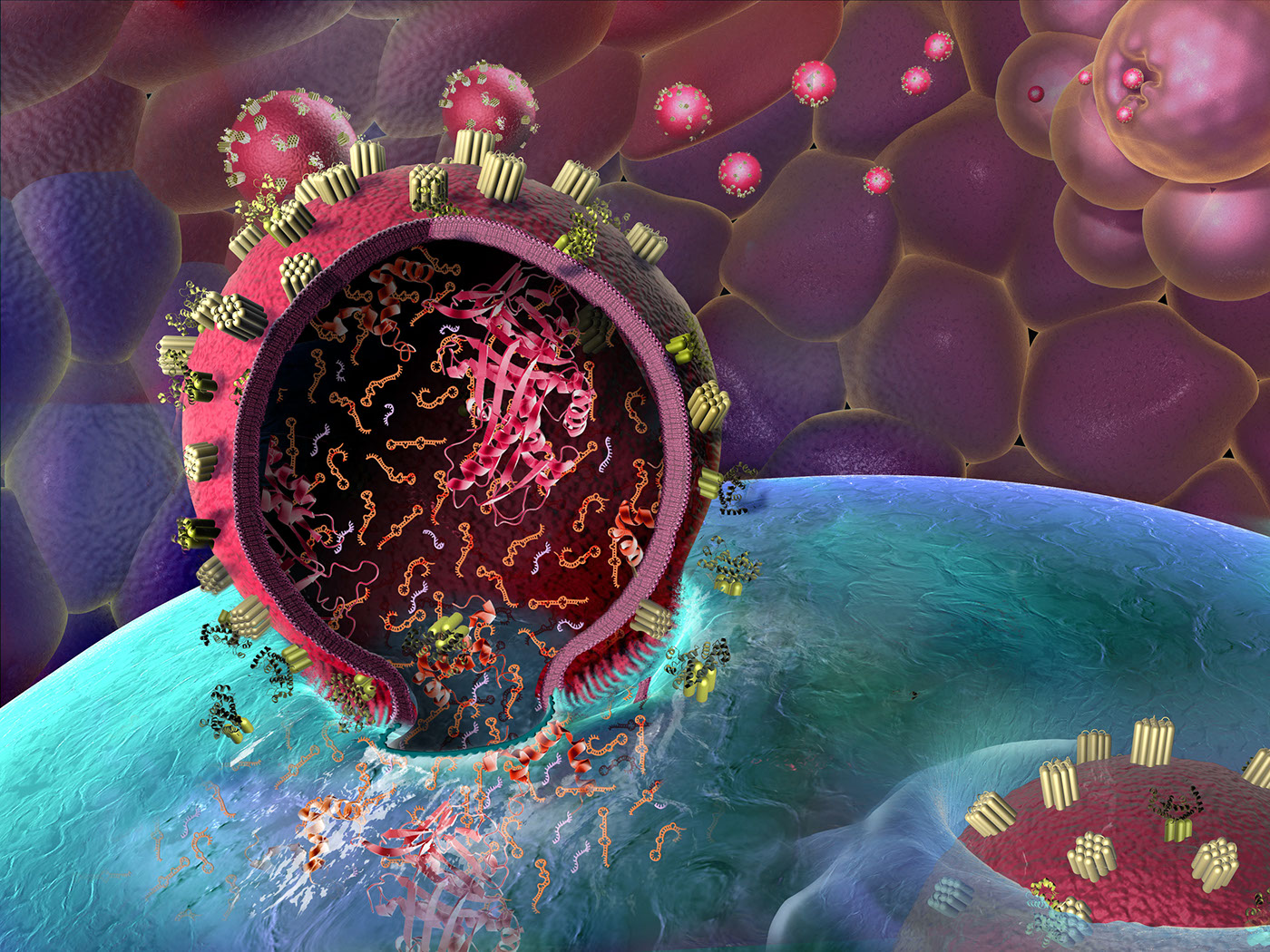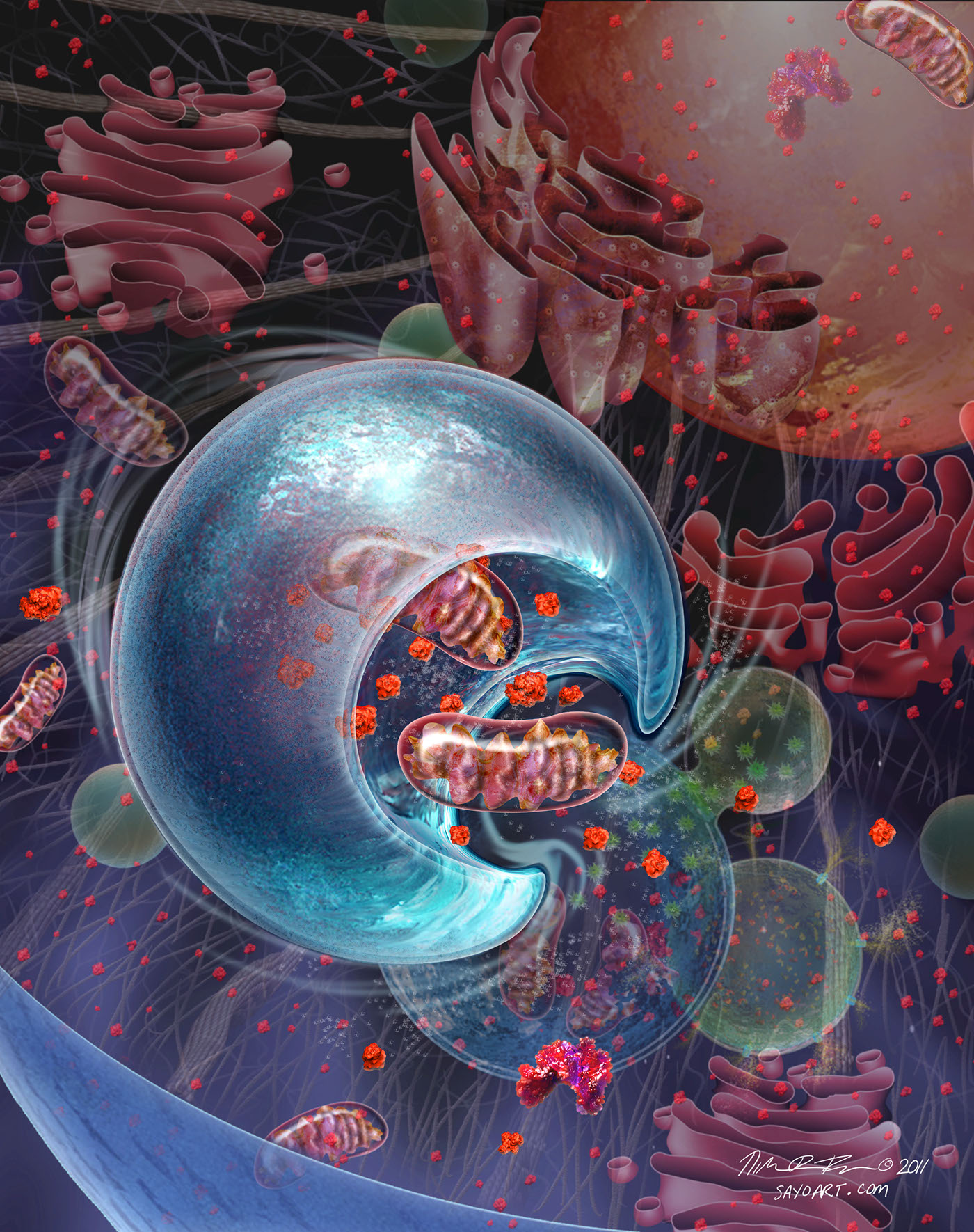
Exosome Entering Cell

Antibiotics Action on Bacterial Membrane: This illustration shows antimicrobial peptides penetrating a bacteria's membrane according to the carpet model. A micelle forms from the microbial lipid bilayer (the fatty molecules), and the cell is punctured.

A vast network of interconnected structural proteins permeate the cell, providing structure, order, and transport highways. A few of the cytoskeleton components shown include: actin, tubulin, cadherin, microtubules and transport vesicles carried by dynein. Gold Winner of IC15

Cell Canibalism: In a process called autophagy, cells cannablize themselves to clean out toxins, recycle used nutrients and to help control disease. Although scientists have known about the process for decades, it's been only recently that the genes involved have been discovered allowing scientists to better understand how the balance of autophagy–too much or too little– can influence disease. This infographic shows the process of autophagy from instigatation by a lack of nutrients, to chopping up proteins and mitochondria, to expulsion of the basic nutrients back into the cell.

Cell Organelle Recycling

Mitochondria and Cancer


